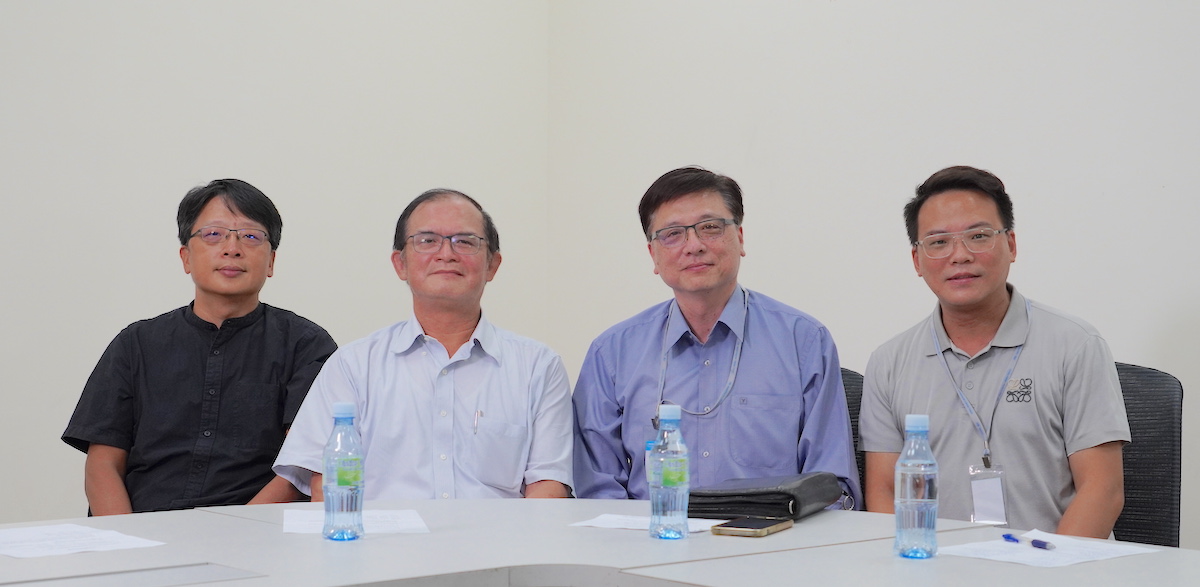Firstly, Dr. Hu explains the origins behind the research in autonomous cars at the institute: based on trends of vehicles going electric and driverless, the ITRI has been researching and developing in the autonomous driving field for years. After related research on Advanced Driver Assistance Systems (ADAS), the ITRI has established the goal of reaching beyond Level 4 (High Driving Automation) of driving automation. After years of hard work, many development and application results have proven to be globally competitive, and the ITRI has thus been cooperating with domestic logistics providers and even received contracts from international automaker giants, for which the institute is currently developing autonomous driving and related technologies.

Before the interview, the editors of Auto Future paid a visit to driverless vehicles developed by the ITRI: apart from minivans and MPVs applied with autonomous driving technology developed in recent years, the institute has expanded its scope to 5-ton-trucks, even 35-ton ones. Aside from acquiring the first test license plate for driverless cars in Taiwan, the ITRI has conducted test drives around Nanliao Fishing Port, Hsinchu, and Shuinan, Taichung; soon, the institute will also begin road tests in Taoyuan Airport and cooperate with HCT Logistics to gradually incorporate autonomous driving technology into the industry.
During the interview, Dr. Wang explains that autonomous driving technology firstly determines real-time information via mapping, positioning, and sensor feedback then utilizes the control system to make corresponding decisions, and lastly sends these commands to the vehicle to react to its surroundings accordingly. Autonomous driving is easier to achieve than ever because of the common usage of Drive-by-Wire systems today. However, there is still much space for adjustment due to varying vehicle types, road conditions, etc. Therefore, the design of decision-making models remains a crucial part of driverless systems.
After Dr. Hu and Dr. Wang’s explanation, we could understand the behavior trees and the decision-making process of autonomous driving systems must adapt to local conditions. Coincidentally, Taiwan’s complex road conditions are ideal testing grounds, especially for unexpected driving circumstances hard to find in other developed countries. As Dr. Hu further explained, due to the unparalleled calculating speed of computers, he’s more optimistic about the autonomous driving system’s safety than the reaction speeds of the human brain.
However, more questions arise as we ask, “how can we drive better?” For example, can autonomous cars avoid danger by steering into the opposite lane when there is no oncoming vehicle? Moreover, our society is more tolerant of human drivers and in turn, stricter with autonomous vehicles: how autonomous driving systems incorporate our need for safety, traffic rules, comfort, and speed will be a more complicated challenge.
As for the direction of development of driverless systems, carrying passengers vs. cargos operate on starkly different prerequisites, and the autonomous driving conditions for passengers differ vastly in public and private transport. Private transport has to cover the need to “go wherever I want,” which is far more complicated than public transport or logistics’ point-to-point requirements. Take Tesla, a company renowned for its driverless technologies of mass-produced models, for example, still mainly utilizes autonomous driving on controlled-access roads like highways, proving we still have a long way to go for full driving automation.
Business models are one of the critical aspects of the popularization of self-driving cars: different requirement settings could generate various business models. To the general car buyer, reasonable pricing for a driverless system ranges from 10%~15% of the car price; to the logistics industry, their concern broadens to solving labour shortages, labour cost, and other operating expenses. If the autonomous driving technology is more mature, then the cost tolerance for the logistics industry could be much higher than that for the ordinary car buyer, which can be a possible niche for future development of driverless technologies.
Moreover, the popularization of driverless technologies can drastically improve road usage, much like an increase in factory utilization rate can boost efficiency. Developing autonomous driving technologies could also provide the government with more diverse digital value by updating and establishing streets and geographical information. Take the UK, for example, location of manhole covers in HD maps can help road or pipeline-related administrations as a reference for more precise maintenance and road pavement plans. Similarly, the Taiwanese government is also planning to push for a “Digitize Taiwan”; incorporation of HD maps could prove to be immensely useful for driverless systems and related administrations using digital technologies to govern.
The ITRI firstly focused on increasing the value of the Taiwanese industry by developing advanced technologies, while now emphasizing contributions to society as a whole. Ultimately, utilizing advanced technologies to pursue a better life remains one of the crucial missions for the ITRI. Thanks to this interview, we can understand MMSRL’s hard work and achievements for autonomous vehicles in recent years. Here’s to hoping these results can further lead Taiwan into the pantheon of next-gen automobiles!